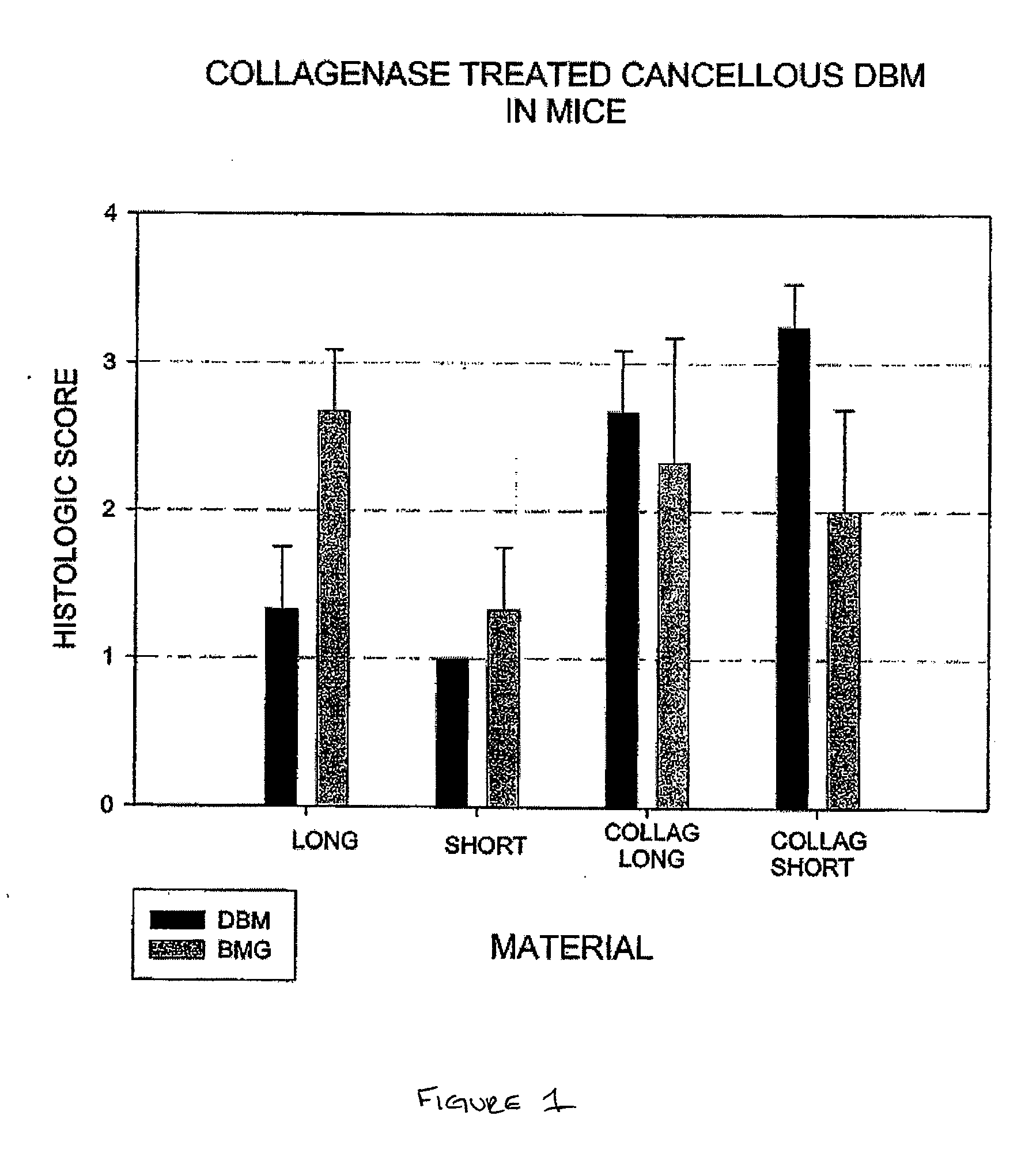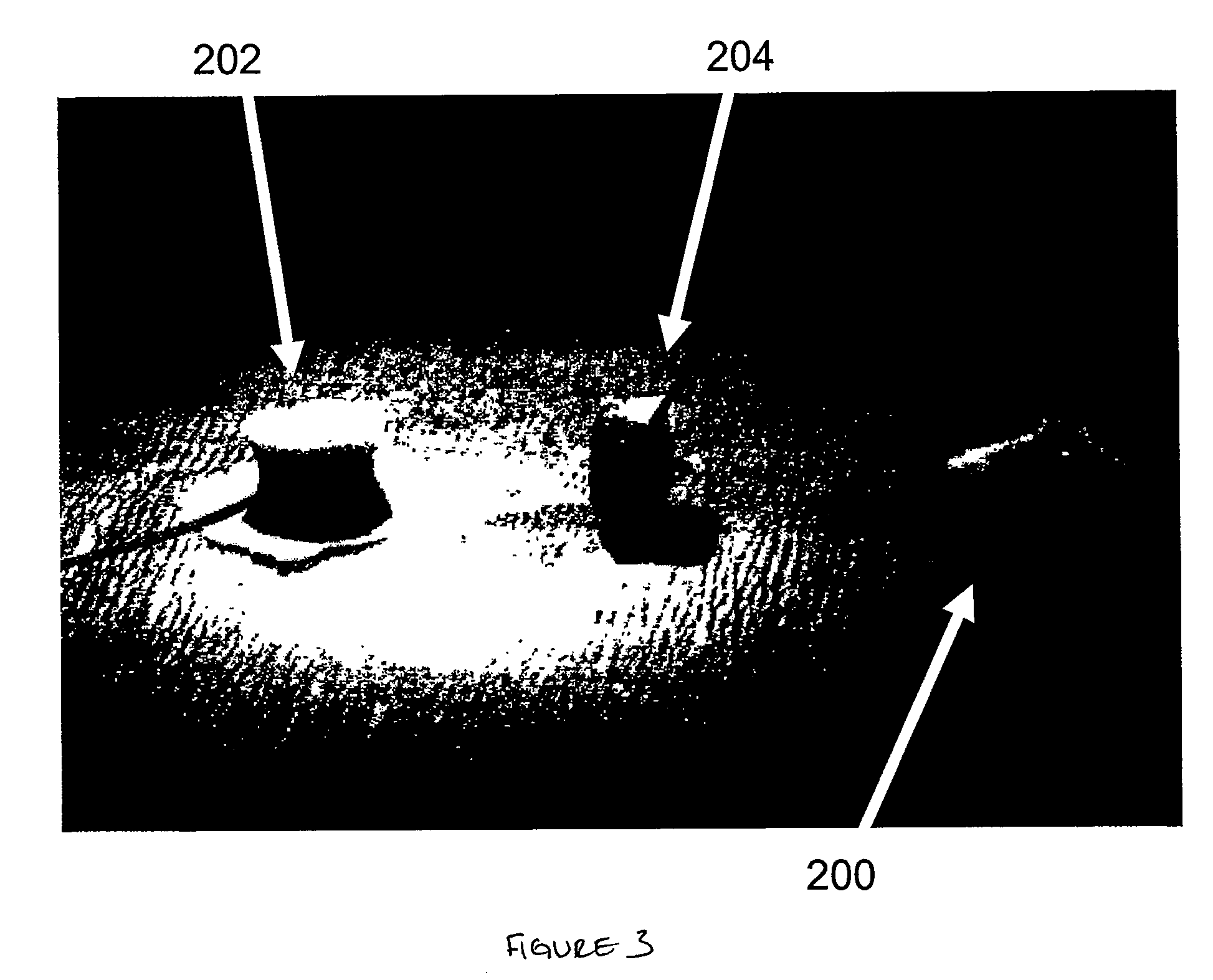Osteoinductive demineralized cancellous bone
a cancellous bone, demineralized technology, applied in the field of osteoinductive demineralized cancellous bone, can solve the problems of only having acb, serious problems for patients and their physicians, and insufficient properties to induce bone formation in adult monkey muscle sites, etc., to enhance the osteoinductive activity of the bone matrix
- Summary
- Abstract
- Description
- Claims
- Application Information
AI Technical Summary
Benefits of technology
Problems solved by technology
Method used
Image
Examples
example 1
[0138]Preparation of Cancellous Dowels. Corticocancellous Dowels were drilled from the femoral condyle of a human donor using 12 mm Codman dowel cutter. Any attached cartilage or cortical bone was removed, leaving only dense and diffuse cancellous structures. The bone was drilled while in a frozen state and the drilled dowels were immediately placed in a cold solution of 0.2 mM, 1 mM NaN3, and 0.1 mM Benzamidine HCl (4° C.). The bones were removed after two hours on ice. In order to remove the bone marrow elements, the dowels were lavaged using semi-gentle (nondisruptive to cancellous structure) cool water. The material was stored at −70° C. until defatting and demineralization.
[0139]Defatting and Demineralization. The dowels were defatted in a solution of 1:1 chloroform:methanol for 15 hours at room temperature. The solution was then poured off and any organic residue was allowed to evaporate from the bone for 6 hours under a fume hood. The cancellous matrix was demineralized in 0....
example 2
[0179]Cancellous bone was demineralized in 0.6 N HCl at room temperature. The demineralized bone was washed, and the wet demineralized bone was smeared to a consistency of a fibrous paste. The fibrous paste was then treated using one of three methods:[0180]1. Hand manipulated with slight pressure, dried at ambient temperature for approximately 72 hours;[0181]2. Placed in a PTFE mold and compressed between plungers. The loaded hand clamped mold was placed in a vacuum oven and dried at 40° C. for approximately 72 hours;[0182]3. Loaded into a mold and compressed between stainless steel dehydrothermal plungers. Initially, 500 pounds of force was applied to the plungers to press out excess water and compress the paste. After initial compression, dead weights were applied to continue to keep the paste under compression while a vacuum was drawn through the dehydrothermal plunters. During vacuum drying (via the plungers), the mold was kept at approximately 40° C. for 72 hours.
After processi...
PUM
 Login to View More
Login to View More Abstract
Description
Claims
Application Information
 Login to View More
Login to View More - R&D
- Intellectual Property
- Life Sciences
- Materials
- Tech Scout
- Unparalleled Data Quality
- Higher Quality Content
- 60% Fewer Hallucinations
Browse by: Latest US Patents, China's latest patents, Technical Efficacy Thesaurus, Application Domain, Technology Topic, Popular Technical Reports.
© 2025 PatSnap. All rights reserved.Legal|Privacy policy|Modern Slavery Act Transparency Statement|Sitemap|About US| Contact US: help@patsnap.com



